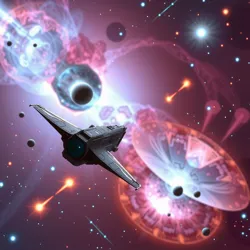Nebula Navigation Network
The Nebula Navigation Network (NNN) is a pioneering initiative designed to facilitate interstellar travel and exploration by providing a comprehensive navigation system through nebulae. This network utilizes advanced technologies to map out safe and efficient routes across vast cosmic distances, ensuring the safe passage of spacecraft through some of the most visually spectacular and scientifically intriguing regions of space.

History
The Nebula Navigation Network was conceived in 2123 by the visionary astrophysicist Dr. Orion Zephyr, who recognized the need for a more reliable navigation system for deep-space explorers. The project gained momentum with support from the Cosmic Cartographers Consortium, an organization dedicated to mapping the uncharted territories of the universe.
In 2140, the first test flight utilizing the NNN was successfully conducted through the Veil of Twilight Nebula, marking a significant milestone in interstellar travel. Since then, the network has expanded to cover numerous nebulae, providing essential data and real-time guidance to both commercial and exploratory missions.
Key Features
Advanced Mapping Technology
The NNN employs cutting-edge mapping technology, incorporating data from a network of space telescopes and probes. This technology allows for the detailed visualization and analysis of nebulae, identifying potential hazards such as dense gas clouds and gravitational anomalies.
Real-Time Navigation
A hallmark of the Nebula Navigation Network is its ability to provide real-time navigation updates. Utilizing a combination of artificial intelligence and quantum computing, the network can swiftly process vast amounts of data to offer precise navigational advice, ensuring that spacecraft can adapt to changing conditions within nebulae.
Safety Protocols
Safety is a paramount concern for the NNN. The network includes advanced safety protocols that can predict and mitigate risks associated with nebula navigation, such as sudden shifts in magnetic fields or unexpected radiation bursts. These protocols are continually updated based on the latest research and data collected from successful missions.
Collaborations
The NNN collaborates with various organizations, including the Intergalactic Explorers Association and Stellar Pathfinders Alliance, to enhance its capabilities and extend its reach. These partnerships have been instrumental in the network's ability to integrate diverse datasets and improve navigation accuracy.
See Also
- Intergalactic Cartography Council
- Quantum Star Charts
- Astrophysical Anomalies
- Galactic Navigation Symposium
References
This article draws on data from the Astrophysical Innovation Archives, featuring insights into the development of cosmic navigation systems. For further exploration, consult the Chronicles of Celestial Expeditions and the latest findings from the Stellar Surveyor's Journal.